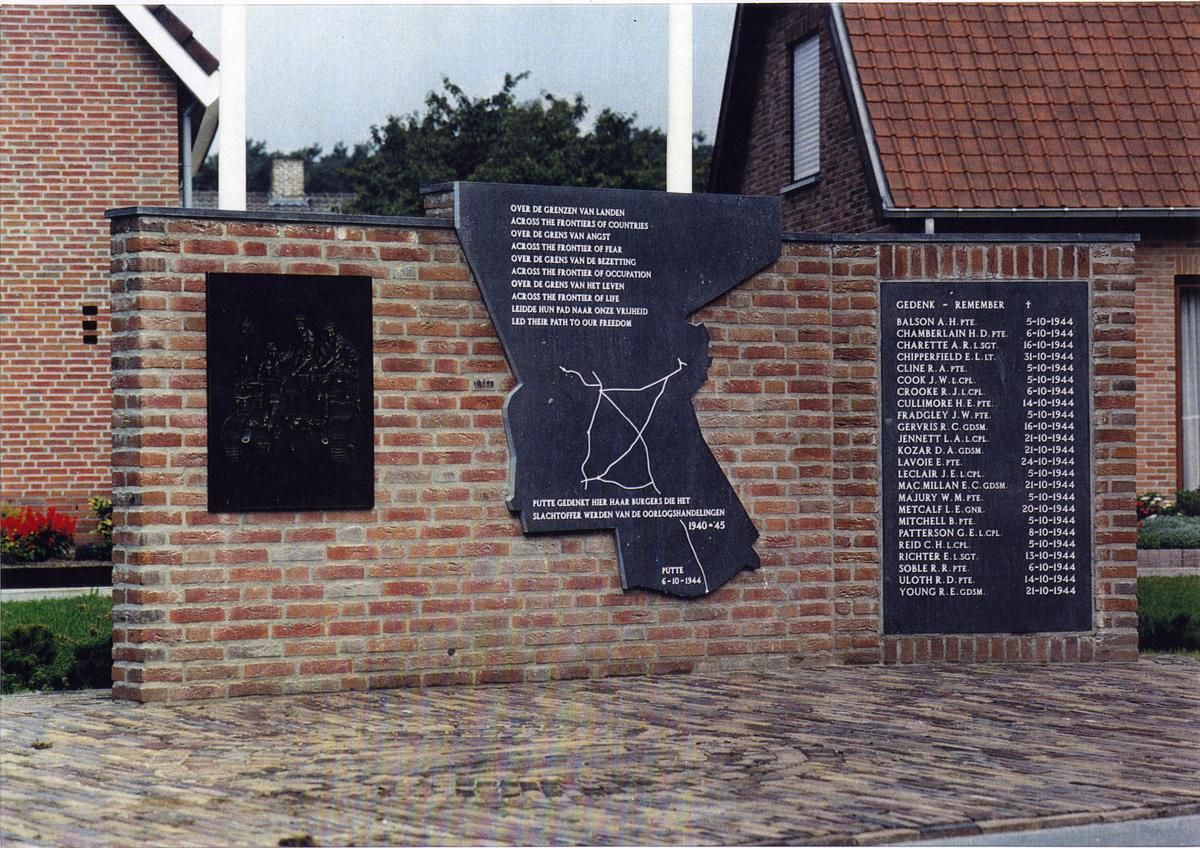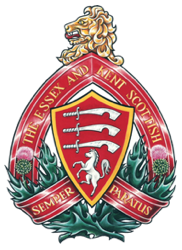The Essex Scottish Regiment at Putte, October 1944

A monument that memorializes the liberation of Putte in the town’s center.
In late September 1944, the Essex Scottish Regiment (ESR) and the rest of the Canadian 4th Canadian Infantry Brigade finished liberating the Belgian port city of Antwerp and plans were being laid to push the German forces out of the area to the north. Antwerp was the largest European port then secured by the Allies. The Scheldt islands north of Antwerp were crucial for Allied forces, as shipping lanes could only be opened if they were secured. The series of engagements and offensives for control of these islands would become known as the Battle of the Scheldt. The battle to liberate the town of Putte was part of the advance to Bergen Op Zoom, which aimed to sever German supply lines and cut off routes of escape.
In the late afternoon of 5 October 1944, the ESR began its advance on the town of Putte. The town of Putte follows the main highway into the Scheldt and has a very thin, linear layout. Initially, D Company secured a bridgehead across the Stabroek Canal, capturing fifty German soldiers in the assault. B Company, led by Major Laird, began advancing up the main road towards the town after the bridge was secured. During the advance, A and C Companies were deployed on the left and right flanks, respectively. B Company’s advance up the main road halted when it encountered heavy German resistance at a crossroads half a kilometer past the bridgehead. Here, B Company and Belgian resistance fighters were pinned down and sustained heavy casualties in a firefight that lasted several hours. A and C Companies continued to advance on either flank and met comparatively little resistance. On the main road, 4th Field Regiment’s artillery observation officer, Captain Ted Adams, and wireless operator Bombardier Ernie Hodgkinson took up positions in a church tower and began to direct artillery support. Despite the assistance of accurate artillery support, Major Laird was forced to abandon the crossroads. B Company was in full retreat, abandoning the two observation officers in the church tower behind enemy lines. Undeterred, the observation team continued to direct artillery fire onto German defenders with devastating effect. Using this artillery cover, D Company charged up the main road. In a stupendous attack, they chased the German defenders from the crossroads. The shattered German infantry attempted to retreat, but most were encircled in the town when A and C Companies surrounded Putte. An additional fifty German prisoners were captured, most being former German sailors conscripted into the infantry. The town of Putte was secured and the ESR, along with reinforcements from the Royal Hamilton Light Infantry, established a defensive perimeter. Artillery observers Adams and Hodgkinson were awarded medals for their composure under fire behind enemy lines.
Civilians emerged in the aftermath and treated the men to fresh fruit, meat, and, of course, alcohol. B Company sustained heavy losses; nearly two thirds of the company were casualties including twelve killed. Their bodies were buried in the town’s cemetery. Later, the bodies would be reinterred in the Canadian War Cemetery at Bergen Op Zoom.
Although this battle played only a minor role in the Battle of the Scheldt, it meant the world to the people of Putte. In the following days, the men of the ESR would discover the horrors of the ongoing famine in Holland. Emaciated children and starving adults ate anything they could find. The Dutch endured starvation, war, and oppression under German occupation. The townsfolk of Putte were free and eminently grateful to their liberators. A veteran of the battle recalls seeing a skinny old women tend to his freshly buried comrades, stating that “every day, regardless of the shelling, she’d go there and tended the graves of our dead.” To this day, the Putte holds an annual memorial for the twelve Essex Scottish men who died liberating the town. During his state visit to Holland in November 1945 the Mayor of Putte presented a fine China dinner plate to Canadian Prime Minister Mackenzie King. The plate was intricately detailed with peacocks and flowers. The names of the twelve perished Canadians were inscribed on a silver plaque on the back of the plate. Written above the inscription is “Eternal memorial for Canadian heroes.” The plate presented to Mackenzie King is still on display in Mackenzie’s collection in the Laurier House, Ottawa.
Story by Calvin Barrett, Canada Summer Jobs 2022 participant
with The Essex and Kent Scottish Regiment Association
Sources
- An “Eternal Memorial for Canadian Heroes”: The Dutch Town of Putte Commemorates the Essex Scottish Regiment by Andrew Horrall in Canadian Military History 20, 3 (2011)
- Duty Nobly Done, The History of The Essex and Kent Scottish Regiment by Sandy Antal and Kevin R. Shackleton, 2006 – Chapter 12
- 1st Battalion The Essex Scottish Regiment 1939-1945 booklet, 1946
